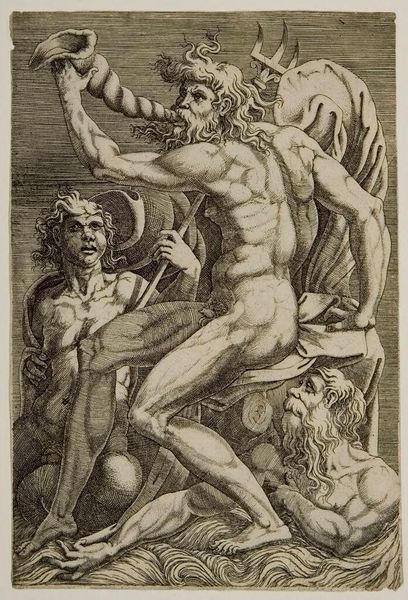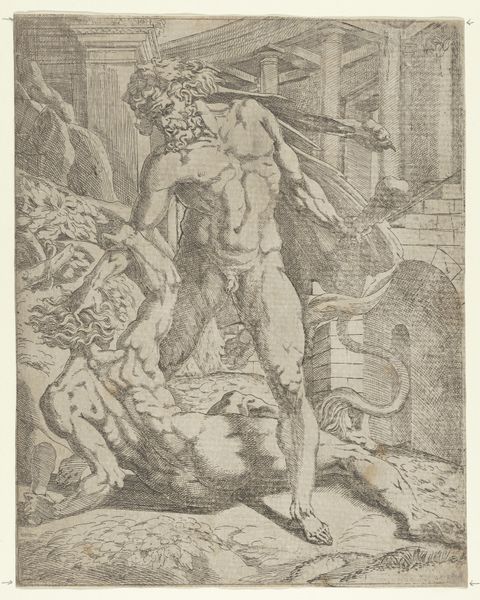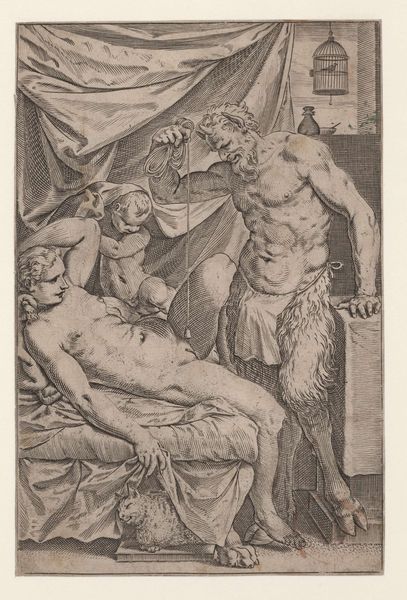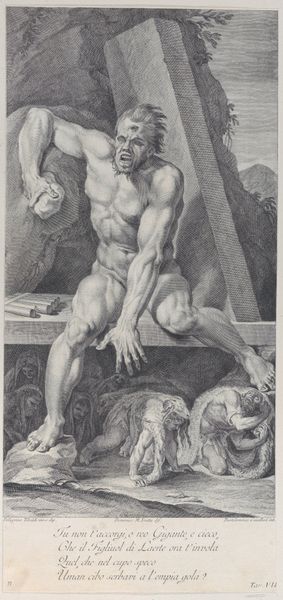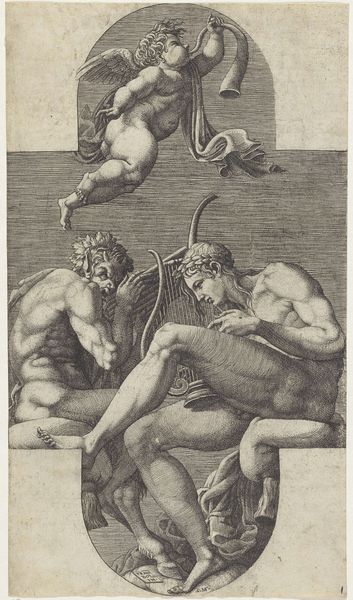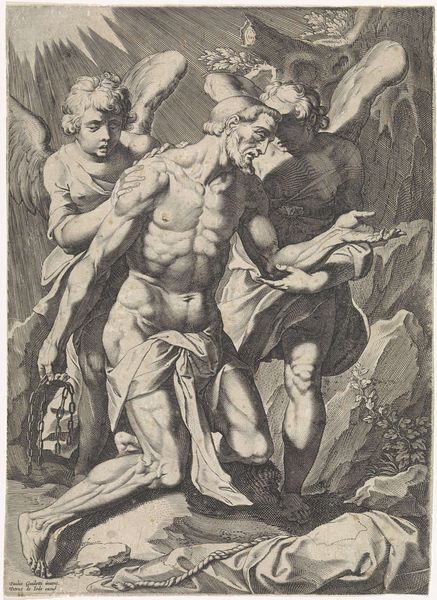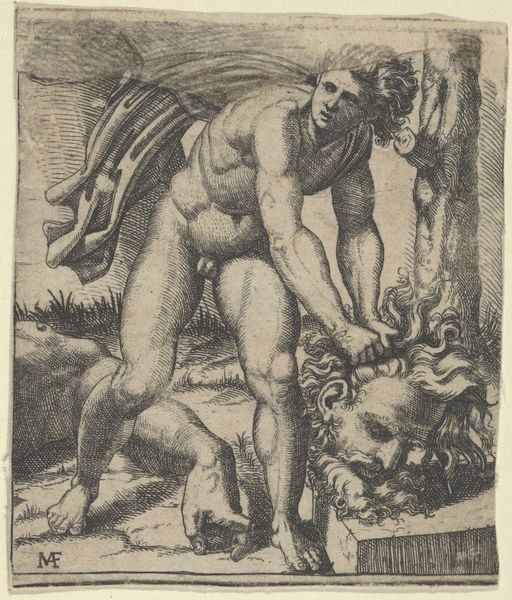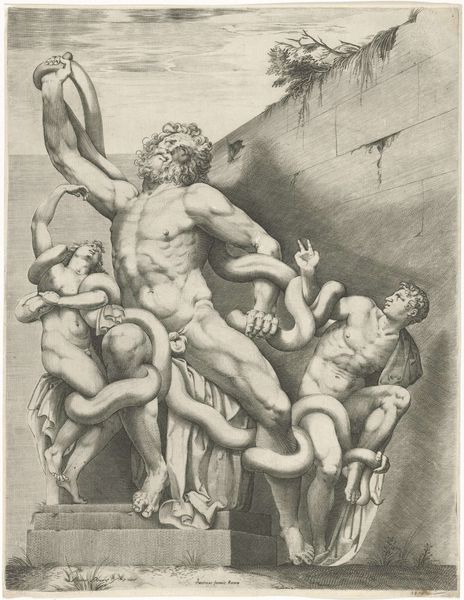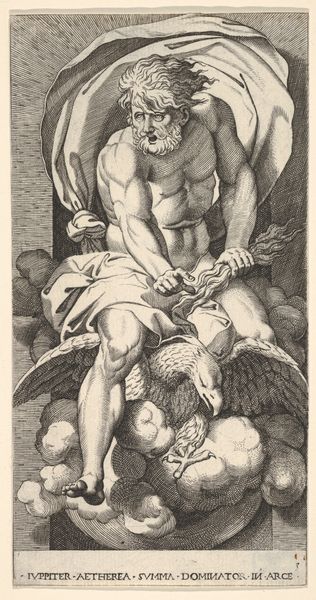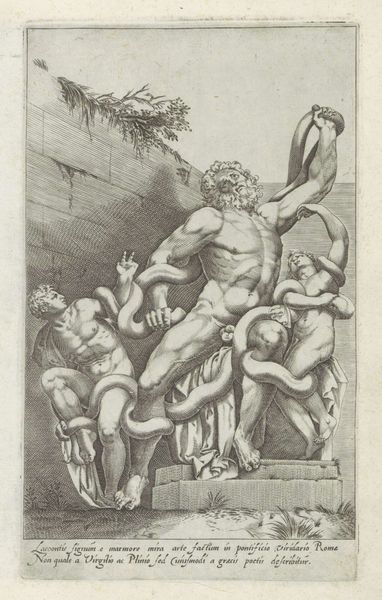
Seated Neptune holding a conch shell to his mouth, accompanied by a seated triton and another emerging from the water at bottom right 1510 - 1590
0:00
0:00
drawing, print, engraving
#
drawing
#
allegory
# print
#
mannerism
#
figuration
#
geometric
#
history-painting
#
italian-renaissance
#
nude
#
engraving
Dimensions: sheet: 9 1/8 x 6 1/8 in. (23.2 x 15.6 cm)
Copyright: Public Domain
Curator: Here we have an engraving dating from sometime between 1510 and 1590, attributed to Giorgio Ghisi. It’s entitled “Seated Neptune holding a conch shell to his mouth, accompanied by a seated triton and another emerging from the water at bottom right.” Editor: My first thought is that it's very dramatic, even theatrical. The figures are rendered with such intensity; the play of light and shadow is quite stark. The anatomy feels somewhat exaggerated, almost hyper-real. Curator: That drama you’re noticing is characteristic of Mannerism, the style Ghisi embraced. Consider Neptune himself. He is centered within the composition, confidently posed to display his commanding physicality. Note, too, the flowing lines, the complex arrangement of limbs, and the dense cross-hatching used to model form and create tonal variation. Editor: Right. The conch shell raised to his lips is, of course, an attribute signifying Neptune’s dominion over the seas, but it also speaks to a deeper, perhaps forgotten language. Sound, or the symbolic control of sound, seems intrinsic. Do you agree that it suggests some narrative moment beyond a simple portrait? Curator: Absolutely. The dynamic posture, coupled with the presence of the tritons, hints at a mythological narrative. One could surmise it captures the moment Neptune calls upon his retinue or perhaps signals a momentous event within his realm. Editor: I find myself drawn to the secondary figures. Their faces especially hint at some larger, unknown history, some depth of memory, of experience, maybe even sorrow. And that trident almost feels less like a weapon and more like a scepter, suggesting governance. Curator: You point toward an astute reading of Mannerist symbolism. Ghisi utilizes traditional iconography to construct a potent statement about power and the mysteries of the sea, while engaging in artistic ingenuity within the aesthetic values of Mannerism. Editor: Yes, the ambiguity is the real power of the piece. There's an emotional complexity that stays with you. Curator: It’s an impressive demonstration of Ghisi's technical skill and an intriguing glimpse into the visual language of the Renaissance, offering a perspective rich in visual structure and design.
Comments
No comments
Be the first to comment and join the conversation on the ultimate creative platform.
